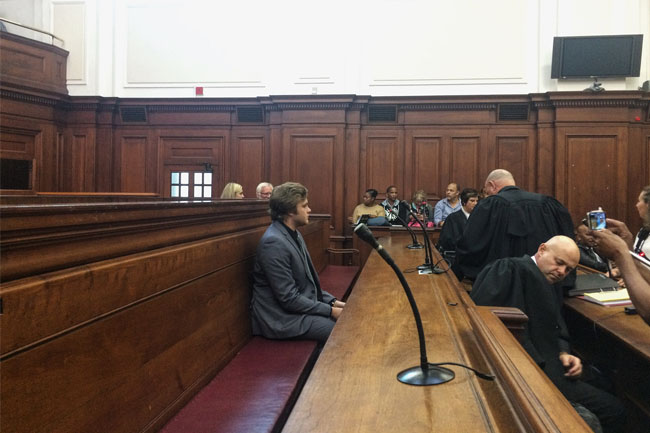For those of us who aren’t able to translate Afrikaans to English at an impressive speed, and cannot truly understand what goes on in a courtroom outside of TV police dramas, Highbury Media’s own legal expert Tracey Stewart is here to help.
Here’s more from Tracey’s notebook, this time about the defence team and their case, based on day four of the Van Breda axe murder trial that has everyone in Cape Town following.
First, let me just say that we all know that the state has the onus of proving that an accused is guilty beyond reasonable doubt. But what we may not necessarily always remember is that there are legal elements which the state needs to prove to obtain convictions against Henri Van Breda.
We have to remember that regardless of the evidence which the general public seems to perceive as being overwhelming against Henri, it is the state’s job to put that axe in Henri’s hand and prove he attacked his family.
This is a hard task, if Marli cannot remember anything, or confirms her brother’s version, then the state has no eye witness and its entire case rests on the evidence which they collected from the crime scene. This is why the evidence and how it was collected and handled is absolutely crucial to the state’s case. Many have expressed their views on the believability thereof but it’s important to note that Henri need not prove his version. He only needs to show that his version may possibly be true. His version only needs to cast reasonable doubt on the state’s version.
Obviously, the first officer on the scene’s evidence is crucial although most likely not near as important as what the state’s experts will say, his evidence would be carefully dissected by the defence to try and get concessions which would support the Defence’s version. This will be detailed by further witnesses and legal argument.
In the meantime, it is useful to remember the four key elements which the state must prove:
Legality
There must be an act (2nd element) which is a crime in law, it seems obvious but it is still an element which must be shown in court through evidence and legal argument.
Conduct
The state must prove that there was an act or an omission [to act] which complies with the ‘definitional aspects’ of the particular crime. For instance, the crime of murder requires “causing the death of another person unlawfully and intentionally.”
In this case, therefore, the state needs to show that Henri wielded an axe at his brother and that act caused his death. It sounds obvious, I know, but Henri could have slashed his brother with an axe but the cause of death was actually a heart attack due to a heart condition. In such a case the state wouldn’t prove the causal link for the crime of murder (a hypothetical example).
Unlawfulness
This is where the state will need to prove that there was no lawful reason for the conduct. Normally lawfulness will be raised as a defence for instance “self-defence” or insanity.
Capacity & Culpability
The state needs to show that we can we attribute blameworthiness to the accused. For example, a one-year-old cannot be held accountable for its actions, for obvious reasons. This can include, for example, proving the mental state of the accused.
Read about the important points which were raised in today’s cross-examination of the first officer on the scene here.
Photography Justin Williams






